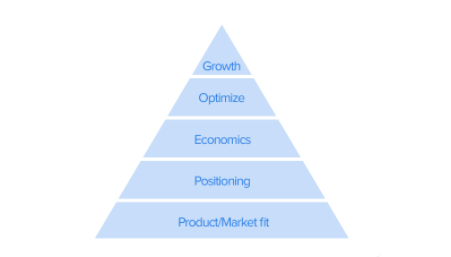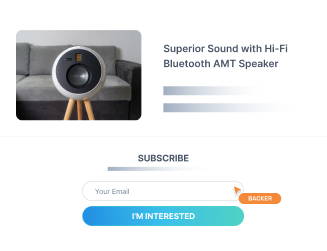The Italian typographer Bodoni said, “Plenty of white space and generous line spacing, and don’t make the type size too miserly. Then you will be assured of a product fit for a king.” That was how to test a product in the market over two hundred years ago. Unfortunately, things have changed, and measuring product-market fit has become more complicated than before. However, modern market test methods like the Sean Ellis test and others could ease the process and provide relatively accurate results.
Whenever entrepreneurs mention the phrase “product-market,” the first word they’ll think about is “fit.” Despite being very beneficial, many founders fear taking the step forward towards testing their product-market fit. When people are emotionally attached to their ideas or products, they don’t want to hear the truth about them. Whether positive or negative, they prefer to do what they think would work rather than doing what the market says would work. However, that approach might have worked a couple of decades ago, but today’s business world made things different for everyone.
The level of availability imposed by the high competition and consumers’ changing minds turned the tables. To avoid product launch failure, you have to come up with something that works, solves a problem, and most importantly, fulfills a client’s need. Your product’s success is tied with its ability to become a requirement for its users. Otherwise, It would be a complete disaster to spend time and money building a product that’s functional and outstanding, but no one needs it. Enough with the abstract words, and let’s introduce you to the Sean Ellis test and its uses for how to test a product in the market.
Test a Product in the Market
Sometimes, people confuse the concepts of testing a product-market fit and targeting the right audience. As a matter of fact, these are two different and essential concepts for a product’s success. You have to know your target audience to build a product they need; then, you have to make sure your product fits well in the market. Otherwise, you will end up with a good product that doesn’t fit in properly.
Having a reasonable number of users is a positive metric, but that doesn’t mean you’ve made it to the end. It indicates you might be on the right path to something significant. The word “might” is critical in the last sentence because it spotlights the probability of being in the wrong direction towards a potential failure rates you can’t foresee at the moment.
However, taking bold steps and moving forward towards increasing the market share requires more than having current users. It requires being a market fit, and people can’t replace your product with another available one. Furthermore, your product achieves something for them enough to recommend it to others and spread the word about it. Only then can you consider the possibility of taking your product to the next level market-wise, like increasing the capital or looking for shareholders to invest more funds.
If your product is not a market fit, it doesn’t necessarily mean you’re out of the competition. It might help you develop some functionalities to enhance your product in terms of what users are looking for. Consider the market test method results as the bread crumbs you should follow to find your way.
Nowadays, decision-makers can use multiple market test methods to test the product-market fit. These methods rely on different variables and metrics to provide insightful predictions about what might happen. Some rely heavily on mathematics and advanced calculations based on sales and statistics. In contrast, others rely on user feedback and the actual customer experience to build such knowledge.
Product/Market Test Methods Existing
The best way to test your product-market fit is to survey current users and ask them different questions to help create a detailed understanding of your product’s positioning. According to Forbes, “real-world feedback will give you the biggest bang for your proverbial buck. It’s vital for you to get objective opinions about your idea. Chances are you’ve been exposed to your concept for so long that you’ve lost the ability to be unbiased.” The bottom line is that user experience matters the most.
There are various test methods. Although all of them aim to provide knowledge for users, choosing the proper one depends on different factors—for example, the type of product, the market criteria, target audience, and data input. The more accurate data you have, the more you benefit from a market test method.
Some methods would question customers about what they like in the product, like Viable Fit, while others like the Sean Ellis test would ask how disappointed they would be if they stopped using it. Moreover, some product-market validation tools like Prelaunch walked the extra mile to introduce an interactive experience where products can be featured on test marketplaces to engage users into evaluating them.
Despite working for the same purpose, market test methods function differently, and the information you get from each one serves you from a different prescriptive. It’s good to know how much people love your product, but it’s better to understand how disappointed they’ll be if they had to stop using it. The more knowledge you can have about your product-market fit, the better decision you can make for its future.
Sean Ellis Testing Method
Before we get into the deep details of the Sean Ellis test, we should introduce you to the man behind the magic. Sean Ellis is the author of “Hacking Growth,” a methodology he came up with to help teams make better decisions about scaling up their work from a product to a growing business. In his book, he fostered the importance of having a growth culture in each company. For Sean, the cornerstone for companies to start their growth is achieving a product-market fit.

Sean Ellis developed a practical and powerful tool to test a product-market fit away from complications. The Sean Ellis test consists of a simple question about the product, three options for the answer, and three conditions for participants. The main goal behind this test is to get feedback from active users and determine how attached they are to using the product. The test helps companies drive sustainable growth, and according to Sean Ellis, “You want to learn everything you can about the people who consider your product a must-have.”
How Does the Sean Ellis Test Work?
The main question in Sean Ellis product-market fit test is “How would you feel if you could no longer use the product?”
There are three potential answers to the question:
- Very disappointed
- Somewhat disappointed
- Not disappointed
Furthermore, participants must correspond to one of these three mandatory conditions:
- People who used the core product or the service.
- People who have used the product or the service at least twice.
- People who have used the product or the service in the last two weeks.
Simplicity flows throughout all the Sean Ellis product-market fit test processes because all you have to do is ask questions, collect answers, analyze results, and make decisions.
Sean Ellis Test Scores
The next step is to examine the data after conducting the Sean Ellis product-market fit test survey. You must evaluate the results to benefit from them, and your goal should be to group similarities in your participants’ responses.
Results Calculations
If 40% or more of the replies to the Sean Ellis product-market fit question were “very disappointed,” then congratulations, you have achieved a product-market fit. Although it’s a great indicator, it doesn’t mean you can base your growth decision solely on that. As you collect other metrics from different surveys and statistics, feel confident that your product has achieved a market fit.
Very Disappointed
It’s overwhelming to know that people would be very disappointed if they couldn’t use your product anymore. It gives you colossal motivation to escalate your business and ensures you are on the right path for the time being.
However, even if you got the Sean Ellis product-market fit 0, it doesn’t mean you should quit because there are other vital metrics in the Sean Ellis test, and you have to analyze them as well. Having the majority of participants “not disappointed” is much different than “somehow disappointed.”
Somewhat Disappointed
You might be asking yourself at this point, what if you couldn’t get Sean Ellis product-market fit 40? Would that be the end of your product? The answer is simply no; it’s not. If most participants have chosen “somewhat disappointed,” it’s an alarm to start important updates based on the market requirements. Although the product doesn’t fit in the market yet, it’s possible with proper modifications and changes to provide what users are looking for.
Related: How To Make A Prototype: A Definitive Guide
Not Disappointed
As hard as it might sound, this indicates your product doesn’t fit in the market, and the more people go with this option; the further your product is from becoming a market fit. Many reasons can lead to this scenario, but handling it requires being calm and professional.
After the Sean Ellis test, the first recommended step is to ask the same participants for details via a secondary survey. Send them more questions to find out what went wrong and how to fix it. Eventually, analyze the results and decide if implementing updates is possible or not.
What if the Test Score Is Below 40%?
It would not be the end of the world if the Sean Ellis test score was below 40%. Although the “very disappointed” were less than 40%, the other answers also have a say in product-market fit status. The overall result should be analyzed, not just one factor. Moreover, there are some basic conclusions any product owner can benefit from:
- The time hasn’t come yet for the growth process to start.
- There are serious risks you should address before it’s too late.
- The product might not hold for a long time against competitors.
- The product requires changes to adapt to users’ requirements better.
A possible next step, in this case, would be trying different product-market fit survey questions based on the previous results. It would help dive deep into the customer’s experience to find out what makes the product important to some of them, who answered “very disappointed,” and what makes the product not that important for others.
Reasons for Using Sean Ellis Test Method
Using the Sean Ellis test is essential for making knowledgeable decisions regarding launching your product, expanding its market share, or refraining from that and focusing on some updates. To summarize the main reasons for using the Sean Ellis test:
- Look at your product from a different perspective to see all its faults.
- Understand how users think of your product and collect their feedback.
- Analyze user experience and decide if you need to update your product or not.
- Make investment decisions based on a better projection of the product-market fit.
- Based on the market fit test, plan an exit strategy as early as possible.
- De-risk the consequences of expanding your business at the wrong time.
Final Words
Conducting a product-market fit test is essential before launching your product on a large scale. However, it should not be the only metric you consider in decision-making. Whether you want something as straightforward as the Sean Ellis test or something more practical with a real-time marketplace experiment like Prelaunch.
You should never underestimate the importance of the results because they will provide a relatively accurate reflection of the reality you can’t see as a product owner. Such results help you look at your product from the eyes of an external supervisor to take the following steps firmly and confidently.




